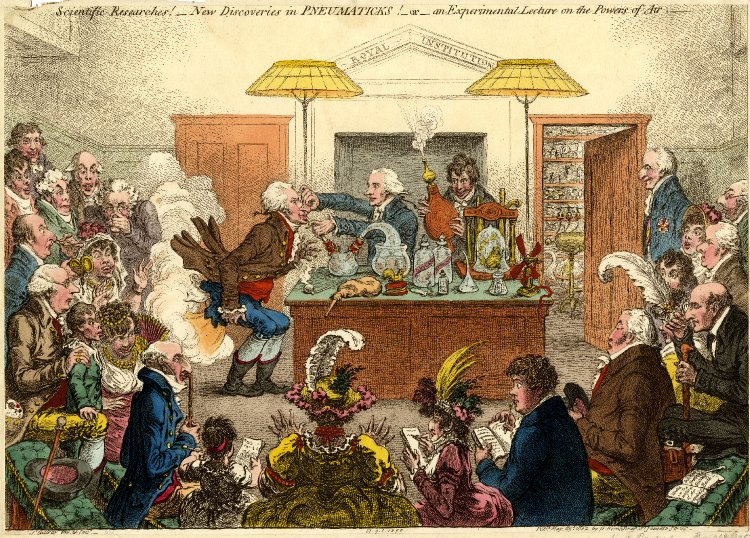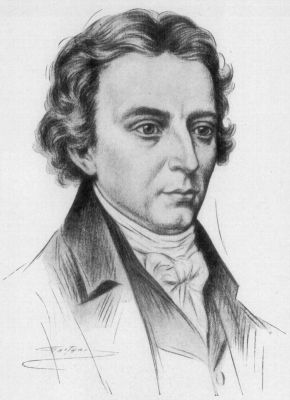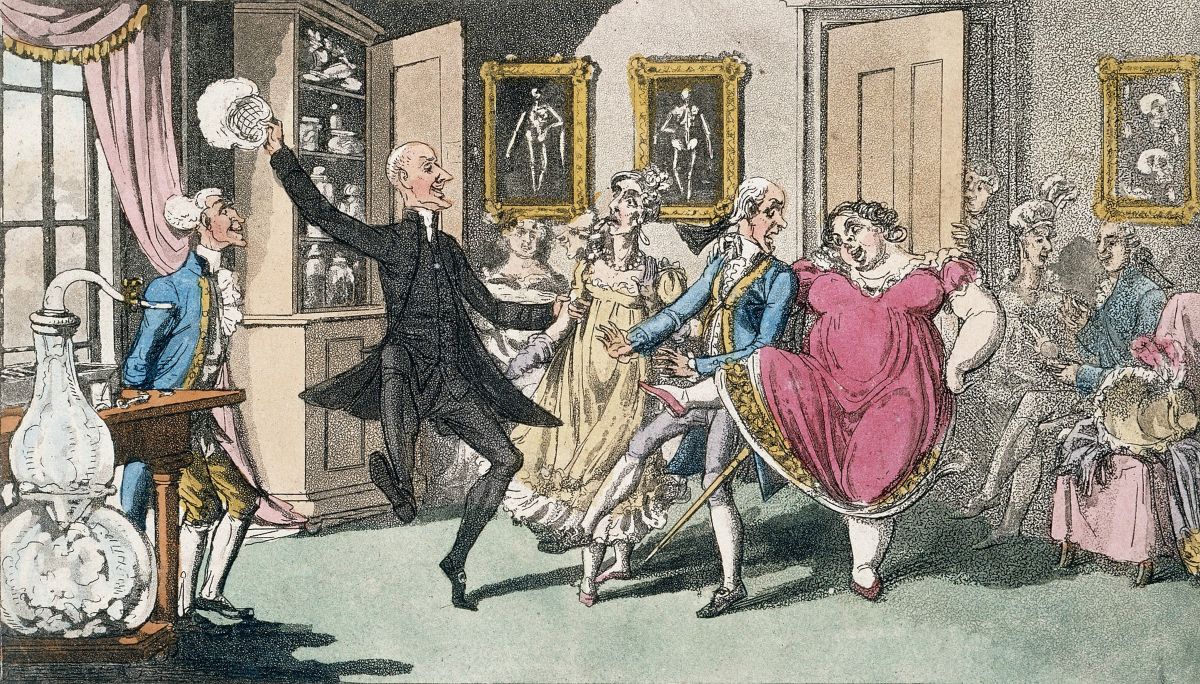Great Britain’s port cities have always been a fertile breeding ground for music movements, because different cultures and demographics meet there. The leader is of course Liverpool with its Mersey beat, but Bristol in south-west England has also influenced this so-called with trip hop. This psychedelic fusion of hip-hop and electronic music originated in the Clifton area, where on a sunny day visitors to the large park exude an atmosphere of freedom and spontaneity. While today it’s mostly music that gets people into this blissful state, two centuries ago it did this mind-altering gas. Then a literally ridiculous discovery was made in Clifton.
The first chemical industry was born in Bristol at the end of the 18th century, which was the reason for Thomas Beddoes (1766-1808) to settle in this city because, as a doctor, he was interested in substances with which he could cure his patients. In particular, the study of gases had caught his attention because he wanted to use it to treat people suffering from respiratory problems.

Beddoes therefore established a clinic to investigate the beneficial effects of gases through experiments. Asthmatics appeared to benefit from oxygen administration. This gave the doctor the idea that there must be even more gases that have a positive effect on the human body. At the time, this was an original idea because little was known about the gas phenomenon.
The 20-year-old chemist and self-taught Humphry Davy (1778-1829) was also interested in it and therefore wanted to study without composition. His superiors recognized his talent and gave him a letter of appointment to work for Thomas Beddoes.
Beddoes and Davy then worked together to find out what gases the air was made of. Until then, this was thought to be just one substance. In reality, it turned out to be a mixture of nitrogen, oxygen, carbon dioxide and several other gases in lower concentrations, as the pair found in their pioneering work.


A mind-altering gas
They were particularly interested in the possibility of synthesizing unknown gases through a chemical reaction from existing gases such as oxygen and nitrogen. Nitrous oxide (N2O), which formed when inhaled deeply affects the brain significantly. Davy even hoped that with this new gas he could understand the exact workings of the brain. Gas N2Oh, that affected consciousness and mindset, it soon became clear to him.
Although the gases were already known to inhibit breathing, nitrous oxide actually had a mind-expanding effect. The most surprising and unexpected effect was the completely relaxed feeling that inhaling this gas produced. It gave people a sense of bliss and they started to find everything fun and wonderful. The name “laughing gas” was soon born.


Magnetism
Laughing gas quickly became the attraction par excellence of social gatherings and parties. Humphry Davy gave it to his poetic friends Robert Southey (1774-1843) and Samuel Taylor Coleridge (1772-1834). Both were immediately delighted by the euphoric state they entered, and Bristol became a new meeting place for poets looking for inspiration, as the laughing gas seemed to strongly stimulate creativity.


Robert Southey’s statement that thanks to the new gas he had finally seen what paradise looked like convinced the last doubters to give it a try. Humphry Davy himself did not take it seriously and began to inhale more and more of it, hoping to observe other effects as well. He was his own guinea pig and probably gave himself hundreds of laughing gasses. At one point he even fell unconscious. Luckily the mouthpiece then fell to the floor so he started breathing fresh air again, otherwise he could have died.
Despite these risks, Davy’s experimental work finally paid off in 1800. One day, when he had a severe toothache, he took a few sips of laughing gas and found the pain lessened. He immediately realized that it could also be used as an anesthetic in surgery.
The scientific world recognized his discovery, which was crowned by Davy’s appointment as a member of the prestigious organization in 1820. Royal Society. However, it was not until 1860 that his discovery was applied in medicine. In the US people then started giving N2O for toothache. Nitrous oxide is still a standard form of local anesthesia in some countries today. It is an effective form of pain relief during labor that millions of women benefit from.


Unfortunately, nitrous oxide has had a less favorable reputation in recent years, as it appears to be a potent greenhouse gas and, along with carbon dioxide and methane, leads to acceleration of the Earth’s atmosphere. The app has strict rules to prevent gas abuse for stimulation and entertainment. Nevertheless, nitrous oxide capsules are becoming increasingly popular among young people to get high, and there is no end in sight to the harm caused by this.
Miner’s lamp
Humphry Davy, together with John Dalton (1766-1844) and Antoine de Lavoisier (1743-1794), formed the basis of modern chemistry as a science, although his name remains mostly in the miners’ safety lamp. However, this invention is based on his years of research into the properties and composition of gases.


Davy had discovered that many explosions in coal mines were caused by fire water (which is largely methane). By covering the flame of the oil lamp with copper gauze, such an explosion could be prevented, because the heat got through the metal, and thus it no longer served as an ignition source for the fire pit outside. The incendiary cartridge that penetrated through the mesh of the lamp gave the flame a blue color, which served as a warning to the miners.
Based on the length of the flame, the fire moisture content could even be determined quite accurately between four and fourteen percent explosion limits. Above the latter percentage, the flame was completely extinguished due to lack of oxygen and the risk of suffocation for the miners. The Davy lamp may have been invented in 1815, but just like laughing gas, its use was still decades away.

